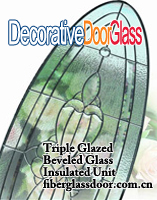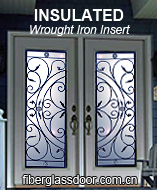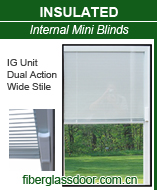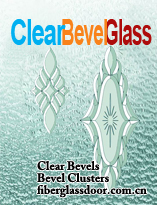Source: AAMA
The jointly-sponsored AAMA/WDMA 2011/2012 Study of the U.S. Market for Windows, Doors and Skylights analyzes the U.S. marketplace for residential skylights, comparing current data to past performance and projecting future performance.
The U.S. market for residential-type skylights is defined for the purposes of the study as residential and light commercial individual, non-contiguous unit skylights. Residential applications exclude purely commercial-intended products (e.g., 4’ x 4’, 4’ x 8’ or 5’ x 6’ unit skylights for retail or industrial applications) as well as non-unit sloped glazing as used in custom or architectural applications.
In 2011, the market for residential-type skylights experienced a mild increase to 850 thousand units. This represents a 2.4 percent increase in overall unit shipments compared to 2010. The increase was driven by continued strength in the remodeling and replacement segment.
In 2011, 18 percent of residential-type unit skylight volume was used in new construction projects. However, the market has continued to shift to replacement and remodeling construction as a result of soft new home construction market and builder price sensitivity. Statistics disclose a steady decline in units sold for new construction from 2006 through 2011 (670,000 down to 150,000 units), although the downward trend for replacement and remodeling—and for the overall total—was reversed in 2010, with 850,000 units sold overall in 2011.
The study noted that customers who are looking simply for more natural light in their homes/offices tend to install plastic glazed units, while glass glazed skylights are generally perceived as more energy efficient, better looking and longer lasting.
Though upward trends in oil prices have continued to cause an increase in plastic skylight material costs, the product remains a less expensive alternative to glass glazed skylights. However, distributors and installation contractors tend to recommend glass glazed units for use in colder climates where energy efficiency is more important to the customer. The spread has changed from 29 percent plastic and 71 percent glass glazed in 2009 to 23 and 77 percent, respectively, for 2011.
Of the plastic glazed skylights, most are still predominantly made of acrylic polymers. However, polycarbonate represented 35 percent of the 2011 residential plastic skylight market as compared to 17 percent in 2009. Polycarbonate is valued for its impact strength characteristics when compared to acrylic, especially in hurricane exposed regions. In 2011, fiberglass dome skylight volume for residential applications was negligible.
More than 90 percent of plastic glazed residential unit skylights feature double or triple glazed domes for better energy efficiency. The share of clear units represented 9 percent of the plastic glazed skylight market, a decrease from 15 percent in 2009. For 2011, tinted or colored applications represent the majority (87 percent) of plastic residential skylight units, with bronze or white the preferred colors.
In glass glazed skylights, low-E glass has become almost a standard option as manufacturers try to meet new energy code requirements, included in 98 percent of units sold in 2011. The share of tinted, clear and reflective skylight glazing has remained low over the last two years due to low-E glass price competitiveness.
Across both glass and plastic glazed skylights in 2011, aluminum framed products were the dominant configuration on the market. The majority of these frames include integral thermal barriers.
Currently, more than three-fourths of all existing single-family homes have some type of air conditioning. Because air-conditioning is also a standard feature in new home construction, customers have only limited interest in natural ventilation that can be achieved with the installation of more expensive venting skylights. Consequently, fixed units remain the most popular at over 80 percent market share in 2011.
According to the study, skylights continue to be perceived as home aesthetics-enhancing products and are often used in new or remodeling applications for custom homes where high quality building materials are important and the benefits of daylighting are desired. Targeting high-end construction applications, manufacturers have improved their designs, workmanship and material quality, all of which generally led to greater durability.
In 2011, the market for residential-type skylights experienced a mild increase to 850 thousand units. This represents a 2.4 percent increase in overall unit shipments compared to 2010. The increase was driven by continued strength in the remodeling and replacement segment.
In 2011, 18 percent of residential-type unit skylight volume was used in new construction projects. However, the market has continued to shift to replacement and remodeling construction as a result of soft new home construction market and builder price sensitivity. Statistics disclose a steady decline in units sold for new construction from 2006 through 2011 (670,000 down to 150,000 units), although the downward trend for replacement and remodeling—and for the overall total—was reversed in 2010, with 850,000 units sold overall in 2011.
The study noted that customers who are looking simply for more natural light in their homes/offices tend to install plastic glazed units, while glass glazed skylights are generally perceived as more energy efficient, better looking and longer lasting.
Though upward trends in oil prices have continued to cause an increase in plastic skylight material costs, the product remains a less expensive alternative to glass glazed skylights. However, distributors and installation contractors tend to recommend glass glazed units for use in colder climates where energy efficiency is more important to the customer. The spread has changed from 29 percent plastic and 71 percent glass glazed in 2009 to 23 and 77 percent, respectively, for 2011.
Of the plastic glazed skylights, most are still predominantly made of acrylic polymers. However, polycarbonate represented 35 percent of the 2011 residential plastic skylight market as compared to 17 percent in 2009. Polycarbonate is valued for its impact strength characteristics when compared to acrylic, especially in hurricane exposed regions. In 2011, fiberglass dome skylight volume for residential applications was negligible.
More than 90 percent of plastic glazed residential unit skylights feature double or triple glazed domes for better energy efficiency. The share of clear units represented 9 percent of the plastic glazed skylight market, a decrease from 15 percent in 2009. For 2011, tinted or colored applications represent the majority (87 percent) of plastic residential skylight units, with bronze or white the preferred colors.
In glass glazed skylights, low-E glass has become almost a standard option as manufacturers try to meet new energy code requirements, included in 98 percent of units sold in 2011. The share of tinted, clear and reflective skylight glazing has remained low over the last two years due to low-E glass price competitiveness.
Across both glass and plastic glazed skylights in 2011, aluminum framed products were the dominant configuration on the market. The majority of these frames include integral thermal barriers.
Currently, more than three-fourths of all existing single-family homes have some type of air conditioning. Because air-conditioning is also a standard feature in new home construction, customers have only limited interest in natural ventilation that can be achieved with the installation of more expensive venting skylights. Consequently, fixed units remain the most popular at over 80 percent market share in 2011.
According to the study, skylights continue to be perceived as home aesthetics-enhancing products and are often used in new or remodeling applications for custom homes where high quality building materials are important and the benefits of daylighting are desired. Targeting high-end construction applications, manufacturers have improved their designs, workmanship and material quality, all of which generally led to greater durability.




 RSS Feed
RSS Feed




